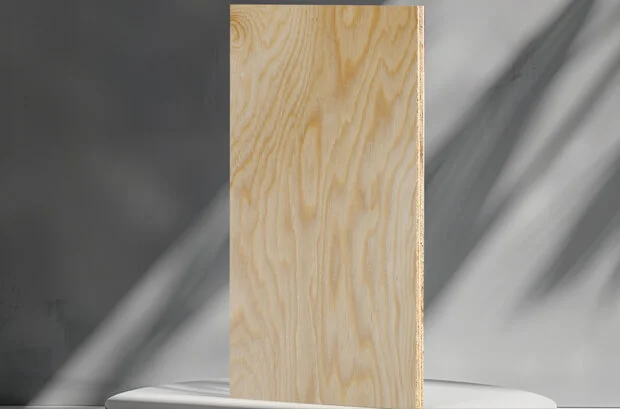Plywood is a board material made from wood segments rotary cut into veneers or from wood squares planed into thin wood and glued together with adhesives to form multiple layers. This type of plywood consists of multiple layers of pine veneer interconnected with each layer having a grain perpendicular to the previous layer. This cross-grain structure provides plywood with strength and stability for load-bearing applications.
Plywood's multi-layer staggered structure makes it have high tensile strength and compressive strength, and can withstand large loads. After high temperature pressing in the production process, it has a stable size and shape and is not easy to deform. The use of environmentally friendly adhesive bonding between each layer of wood, so that each layer of wood closely combined, improve the overall strength, with better seismic performance. Plywood has good processing properties and can be cut, carved and painted easily.
1. Structure: Plywood consists of multiple layers of veneer textured together, with the texture of each layer perpendicular to the previous layer. This horizontal grain structure provides plywood with strength and stability.
2. Strength: Plywood is designed to be strong and durable for use in a variety of scenarios.
3. Moisture Resistance: Although not completely waterproof, plywood is treated to resist moisture and corrosion, making it suitable for use in wet or humid environments.
4. Thickness: The thickness of the plywood can be customized to meet the needs of customers (12-28mm), which is suitable for a wide range of applications.

Fuqing plywood is made of high quality larch, radiata pine, masson pine, etc., the quality is stable, and it has passed the Australian AS/NZS2269 certification and has Bsi/CMI/JAS/FSC/PEFC certificate. While ensuring quality, Fuqing plywood pays attention to environmental protection and sustainability, practical environmental protection glue, formaldehyde release of plywood is less than 0.5mg/L (equivalent to E0).
Plywood is widely used in furniture making, indoor and outdoor decoration, architectural structure and other fields. For example, in architectural design, laminate can be used to make walls, floors, ceilings, etc., adding a unique texture and beauty to the building.